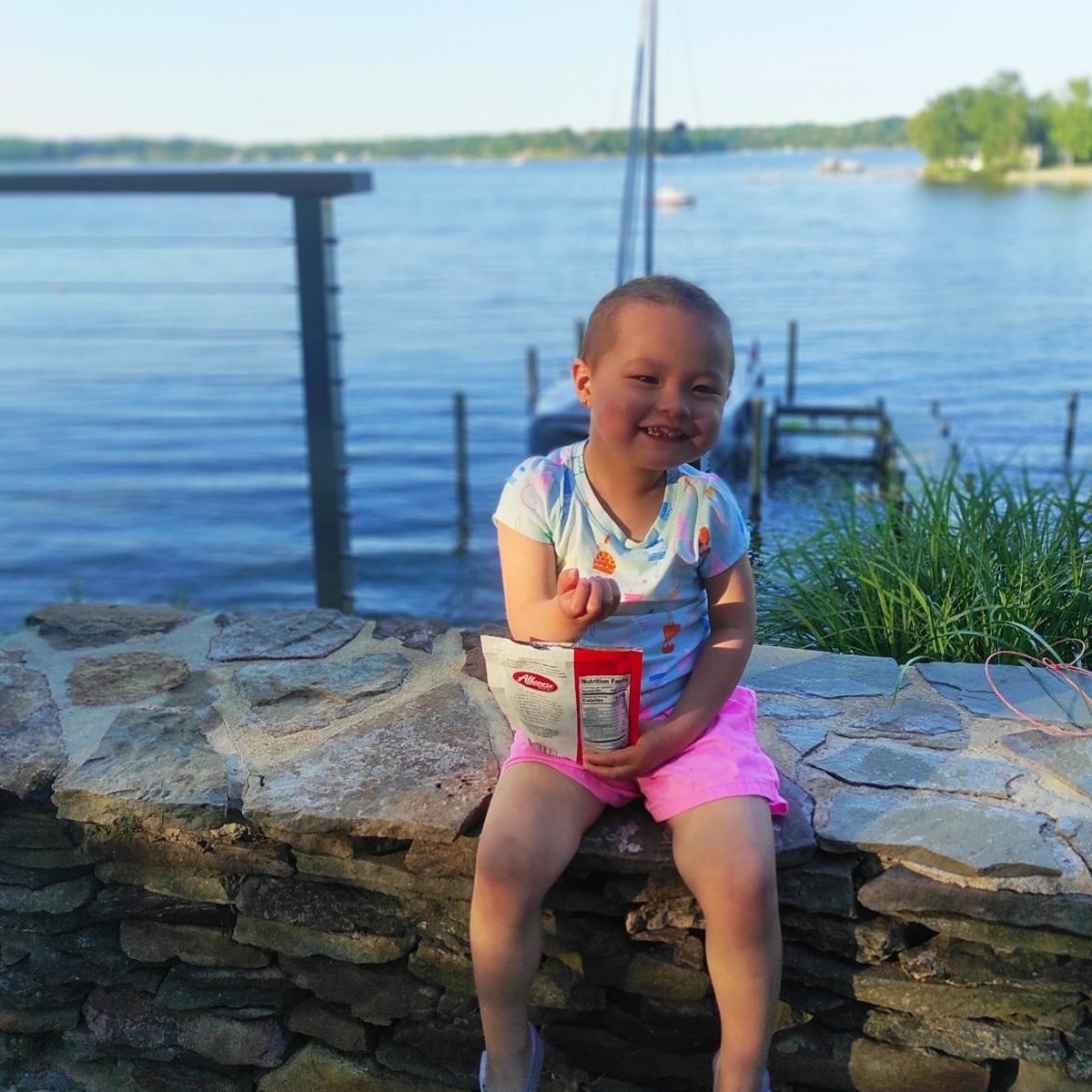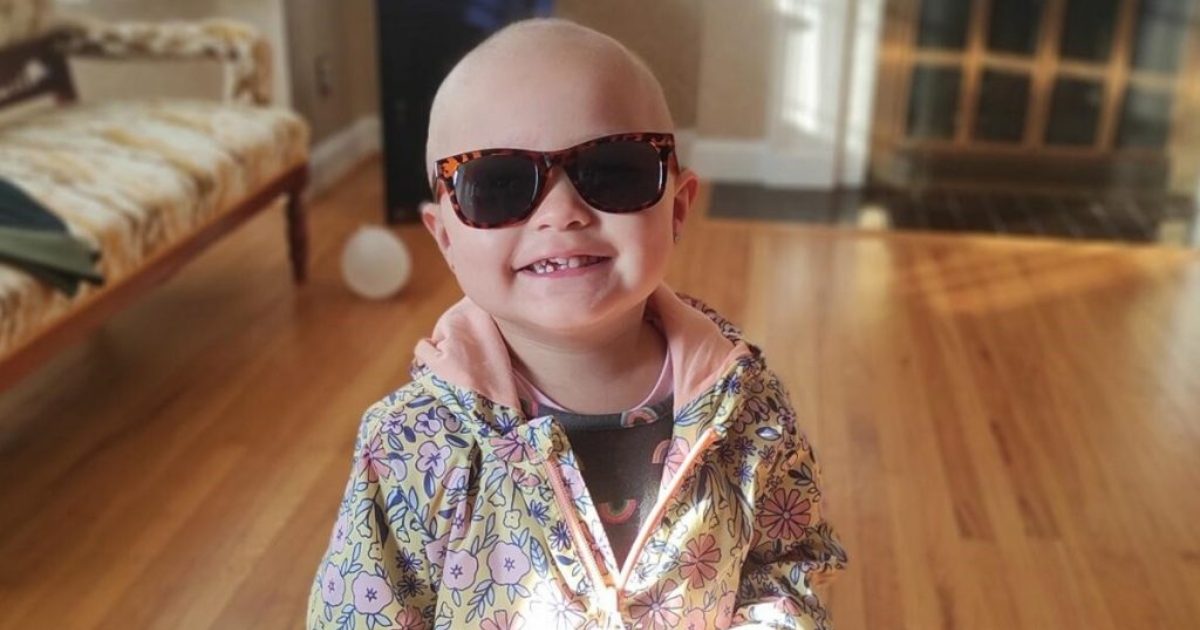Being Vigilant of Your Health
- Acute lymphoblastic leukemia is a rare but very aggressive disease that can grow quickly.
- Leukemia may reside in bone marrow before traveling to the blood, tissue or lining of the brain.
- A relatively new treatments for ALL includes CAR T-cell therapy, which re-engineers a patient's immune cells to fight the disease.
- Treatment advances in recent decades helped up to 85% of children diagnosed with cancer survive five years or more, according to the American Cancer Society.
Grace’s parents first noticed her symptoms in July 2021 at the age of 2. It was the constant sickness that had them concerned, but the loss of energy made them push for answers.
Read More
“When she finally came home from the hospital, she quickly rebounded with the help of our family, especially her two older brothers. She started walking again within the first two weeks, slowly at first but was very determined. She tolerated the treatments, and the chemotherapy became her routine,” the family said.
Grace’s spirits remained high throughout treatment, and she never lost that infectious smile. Her parents say is currently receiving oral chemotherapy every night, along with other types of chemotherapy, and she will finish long-term maintenance therapy in October 2023
“Although there are still many bumps along the road, she continues to thrive, never whining or complaining. Grace just started preschool and participates in ‘tots soccer’ the only girl on the Turkey Dinosaurs team. We asked Grace what she wants to be when she grows up. Her answer: a mermaid doctor. We are very proud of her. We hope she continues to feel good and stays in remission,” her parents said of her beautiful attitude.
Acute Lymphoblastic Leukemia
Acute lymphoblastic leukemia, also called acute lymphocytic leukemia, is a rare type of cancer of the blood and bone marrow. The disease is caused by DNA damage to the cells in your bone marrow that give rise to blood cells. Red blood cells carry oxygen to tissues, white blood cells fight infections as part of the immune system, and platelets help stop bleeding.
"(ALL) is a type of cancer that is very aggressive. It grows very fast. Within a few weeks, a few months, the person will start to feel very sick. And that's why we will have to give it an equally aggressive type of treatment to break that cycle," Dr. Olalekan Oluwole, a hematologist with Vanderbilt University Medical Center told SurvivorNet.
Dr. Oluwole says ALL is the result of a "quiet mutation" that causes leukemia.
"It is often not something that is heritable. If it happens to be a pattern in a certain family, many times that may be maybe because they were in the same environment," Dr. Oluwole said.
ALL Symptoms and Treatment
The Mayo Clinic says signs and symptoms of ALL include:
- Bleeding from the gums.
- Bone pain.
- Fever.
- Frequent infections.
- Frequent or severe nosebleeds.
- Lumps caused by swollen lymph nodes in and around the neck, armpits, abdomen or groin.
- Shortness of breath.
- Pale skin.
- Weakness, fatigue, loss of energy.
"ALL grows very, very fast. If we don't do anything, it will cause somebody to die within a few weeks," Dr. Oluwole says. But thankfully, with keeping vigilant to changes in your health and available treatment options, the disease can be managed.
Treatment for ALL comes in separate phases.
- Induction therapy. Kills most of the leukemia cells in the blood and bone marrow and to restore normal blood production.
- Consolidation therapy. Post-remission therapy that destroys any remaining leukemia in the body.
- Maintenance therapy. Prevents leukemia cells from regrowing.
- Preventative treatment to the spinal cord. Chemotherapy drugs are often injected into the fluid that covers the spinal cord to kill leukemia cells in the central nervous system.
Relatively new treatments for ALL are undergoing clinical trials, including CAR T-cell therapy, which re-engineers a patient's immune cells to fight the disease.
"Some people need a break from the chemo with all the side effects," Dr. Oluwole said, explaining a need for alternative treatments.
"The beauty of this treatment is that it uses something that is innate to the patient to target the leukemia," Dr. Oluwole added.
Treatment advances in recent decades helped up to 85% of children diagnosed with cancer survive five years or more, according to the American Cancer Society.
Childhood Cancers, What to Look For
Fortunately, Grace's parents were vigilant and noticed her illnesses quickly, which is key to the early detection and treatment of cancer. Childhood cancers can present a wide variety of symptoms, which can include:
- Flu-like symptoms. Headache, nausea, vomiting, blurred vision, seizures, and drowsiness.
- A "glow" in the pupil, occurs when the pupil appears white or pink instead of a red when you shine a light in the eye.
- Itchy skin.
- Trouble exercising.
- Decreased appetite.
- Swollen face, neck, arms, and upper chest.
- Abnormal bleeding.
- Stomach lump which can involve fever, nausea, constipation, blood in the urine.
- Bone or joint pain.
Parents are their children's biggest healthcare advocates and SurvivorNet doctors encourage parents to ask questions and be engaged.
"Every appointment you leave as a patient, there should be a plan for what the doc is going to do for you, and if that doesn't work, what the next plan is," Dr. Zuri Murell, director of the Cedars-Sinai Colorectal Cancer Center told SurvivorNet.
Impact Childhood Cancers Have on the Family and How to Cope
Family members caring for a child diagnosed with cancer can be incredibly stressed. In a previous interview with SurvivorNet, Jayne Wexler, whose son was also diagnosed with acute lymphoblastic leukemia, found therapy and support from other family members helpful in managing the added stress.
"Being a caregiver is a huge job. Fortunately, my husband and family were very supportive…it's really hard to see your child go through this," Wexler said.
Family support not only eases the anxiety of the cancer warrior, the added support helps their loved ones too. As for Grace and her recovery, she spent 22 days in the hospital undergoing treatment before going home. Her family rallied around her throughout her treatments to keep her spirits lifted.
"When she finally came home from the hospital, she quickly rebounded with the help of our family, especially her two older brothers," her parents said.
Grace is expected to finish her maintenance therapy in October as she enters her final phases of treatment.
Learn more about SurvivorNet's rigorous medical review process.

